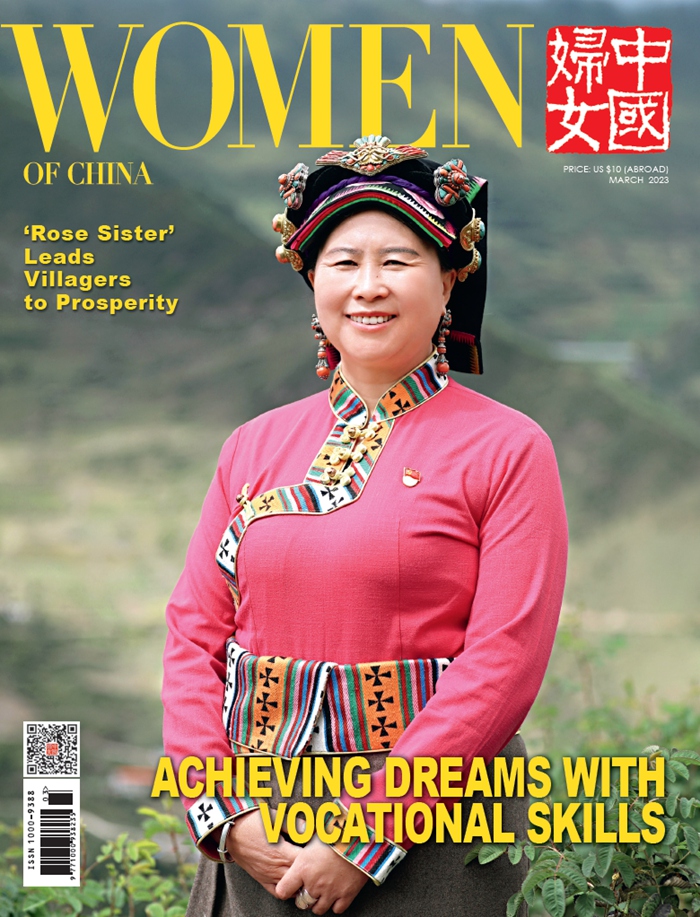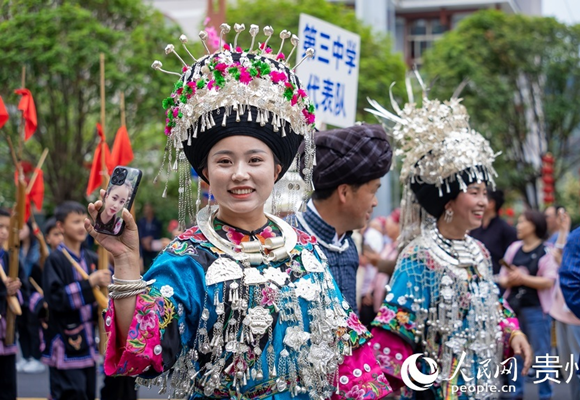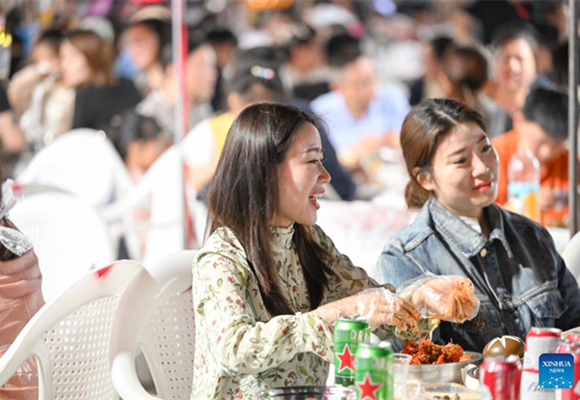Jewelry Designer Inspired by Wuhan's Iconic Landmarks
Fang Longhuizi first arrived in the provincial capital of Central China's Hubei Province eight years ago as a freshman of the Gemmological Institute at the China University of Geosciences in Wuhan. The city is about 600 kilometers away from her hometown, Yangzhou, East China's Jiangsu Province. The stark contrast of the two cities, in terms of the temperature, food and culture, didn't stop her falling in love with Wuhan and, as a jewelry designer, she soaked up the atmosphere.
Because of the novel coronavirus outbreak, Wuhan went into lockdown on January 23. On the same day, Fang was due to travel back to Yangzhou to celebrate Spring Festival with her family. She could have left the city that day for her hometown, but she chose, like many other people who had to change their schedules for the Lunar New Year, to stay in the city with her husband.
"There were many different emotions emerging around about the outbreak, especially negative ones, such as fear, isolation and anger," says Fang, 26, a teacher at the university, where she obtained her bachelor and master's degrees in jewelry design. "I felt very sad and I realized how much I love the city and how much I miss the beautiful things about it."
To demonstrate her love for the city, Fang has released a set of drawings, titled This Is Wuhan, mostly designs of necklaces, showing the place as a city of colorful culture, with layers of geographic, historic and artistic connotations.
One February 21, she released the first nine pictures on micro-blogging platform Sina Weibo, which were widely shared by other users. The city's iconic landmarks, such as the Yellow Crane Tower and the Yangtze River Bridge, and its tourist attractions, including metasequoia trees and cherry blossoms, have all become Fang's inspiration for her design.
"I love the way the designer portrays the city," commented a fan under her post. "As a Wuhan native, I cannot wait to walk on the crowded streets again and taste the local food after the outbreak ends." Another user wrote: "Every year I go to Wuhan University to enjoy the view of the cherry blossoms. Spring has arrived and the cherry blossoms again. Everything will be fine."
Each of the drawings took Fang about four hours to finish, and she says she didn't expect all of the attention they are getting online, but she is happy that, as a result, some companies have contacted her, hoping to turn her designs into reality.
Fang saw a silver lining in the current, challenging situation.
"It allowed me to reflect and look at the city I'm living in thoroughly and with more depth," she says. "Together, we opened a space for compassion and a space to love, when bad things happened to the city."
The inspiration for her designs came from her daily life in Wuhan during the past eight years. She has finished 15 drawings in this series, and is now working on a new set that was inspired by youth culture in the city.
For one piece among her current series, Fang was inspired by Hubei Provincial Museum, which was established in 1953 as one of the eight major museums in China and is located near her home. She incorporates the design of its architecture, such as the gray blue ceiling tiles on the roof of the museum, into her jewelry drawings. The depiction of the famous Sword of Goujian, a bronze sword excavated from a tomb in Hubei's Jingzhou, with a history of more than 2,000 years, provides the centerpiece of her drawing.
Another design, titled Donghu Lake, a beautiful landmark lake in the east part of the city, is her favorite. It's one she holds dear for personal reasons. The lake is a popular scenic spot among tourists and locals, with its 102-kilometer greenway surrounded by trees planted on the lakeside, its connecting islands, lakeside parks and nearby small ponds. It is also the place where Fang and her husband once went on dates and got married.
In the design, Fang delicately portrayed the ripples of the lake and the tranquillity of the place.
"The first thing I want to do when the outbreak ends is to walk along the Donghu Lake. I miss the gentle breeze brushing my face," she says.
Fang has also integrated elements of the local food into her jewelry designs, with a piece called Guozao. In the local dialect, guozao means "having breakfast."
"When I first arrived in Wuhan, I noticed that guozao is very important for local people. There are various breakfast foods and my favorite is a bowl of the signature hot-dry noodles," she explains.
"Now, the city is empty. Places, which used to be crowded, are very quiet, but it will get better."
For Fang, her passion for jewelry design started in high school. Her mother, an art lover who teaches in a kindergarten in Yangzhou, introduced Fang to painting, calligraphy and music, when Fang was a toddler.
"I first learned about the major in jewelry design from a student of my art teacher in high school. She was a student at the Gemmological Institute of the China University of Geosciences," recalls Fang.
"When she presented her jewelry drawings to us, I was instantly hooked, and decided to study the same major as her."
Before she started teaching at the university in March 2019, Fang worked for a jewelry company in Shenzhen, Guangdong Province, which enabled her to gain the experience of turning drawings into real pieces.
(Source: China Daily)
Please understand that womenofchina.cn,a non-profit, information-communication website, cannot reach every writer before using articles and images. For copyright issues, please contact us by emailing: website@womenofchina.cn. The articles published and opinions expressed on this website represent the opinions of writers and are not necessarily shared by womenofchina.cn.







 WeChat
WeChat Weibo
Weibo 京公网安备 11010102004314号
京公网安备 11010102004314号